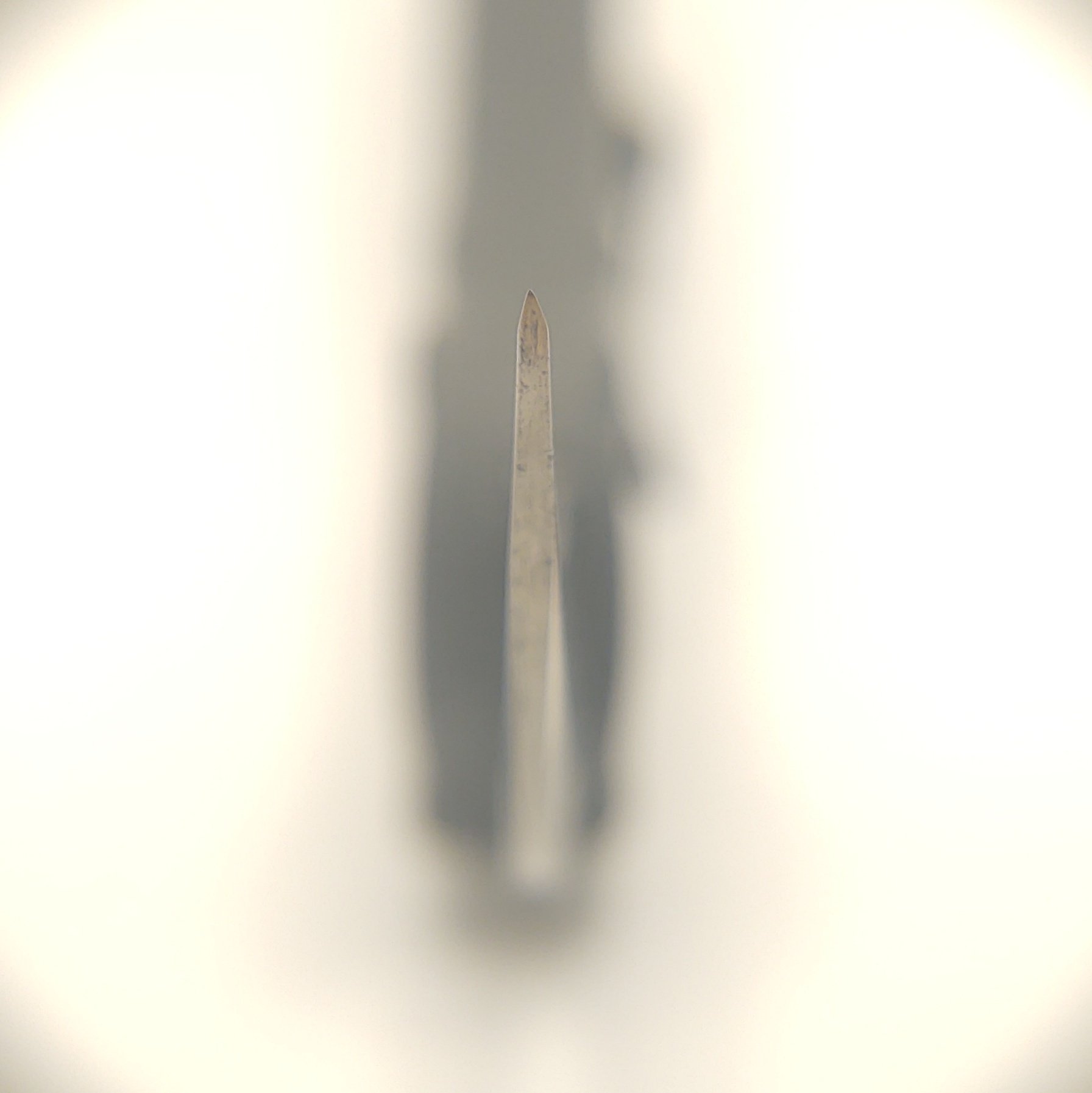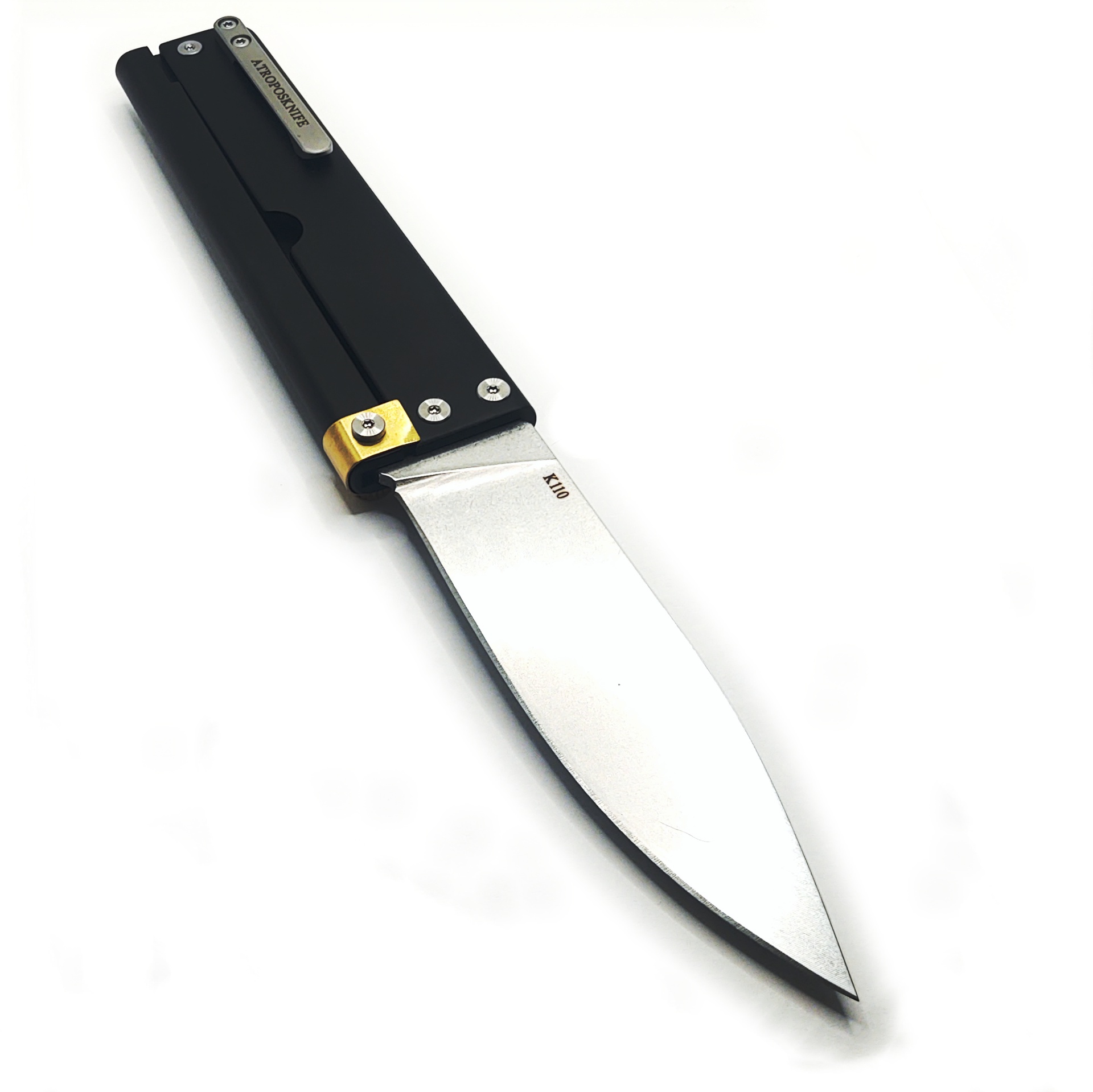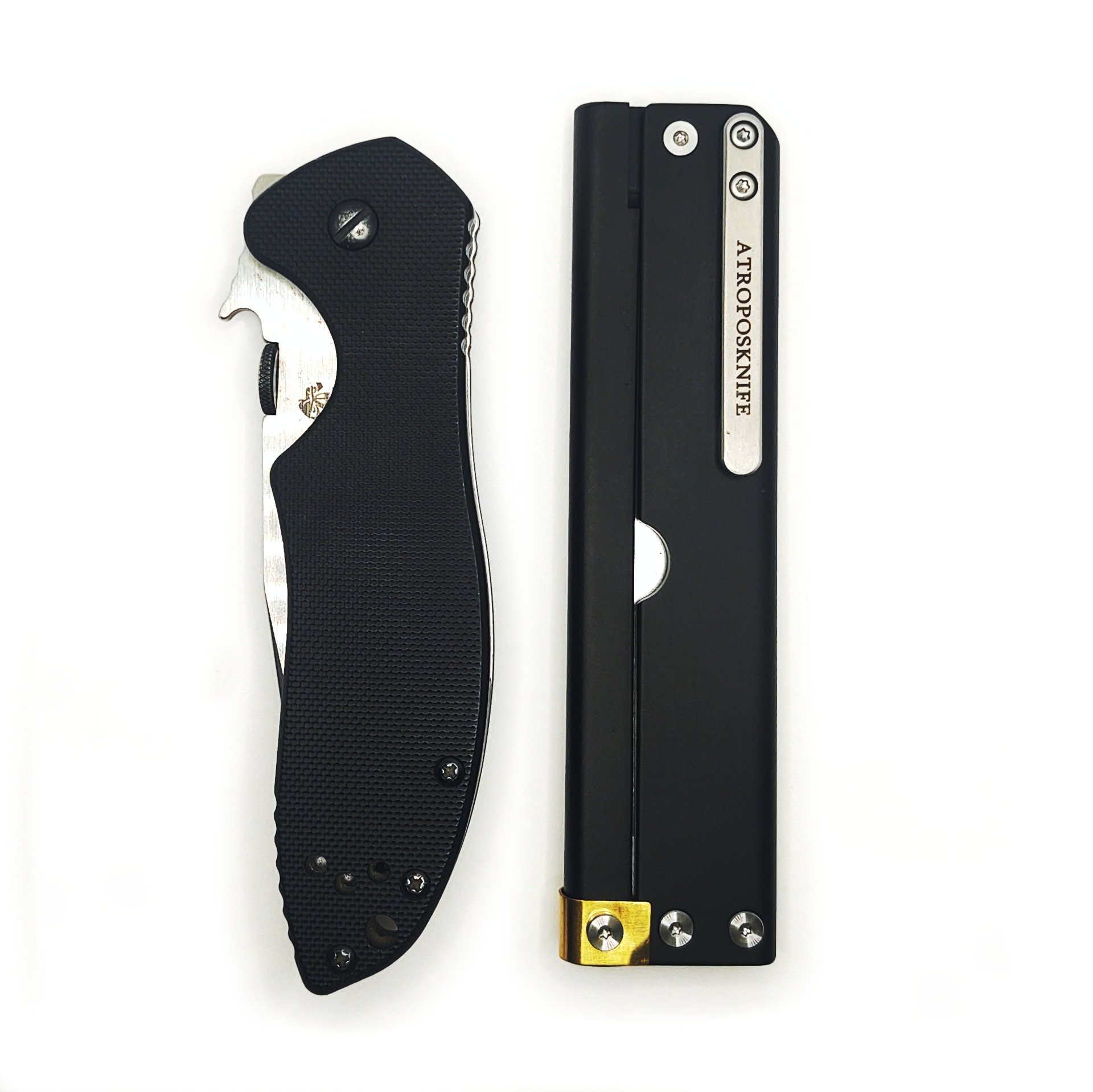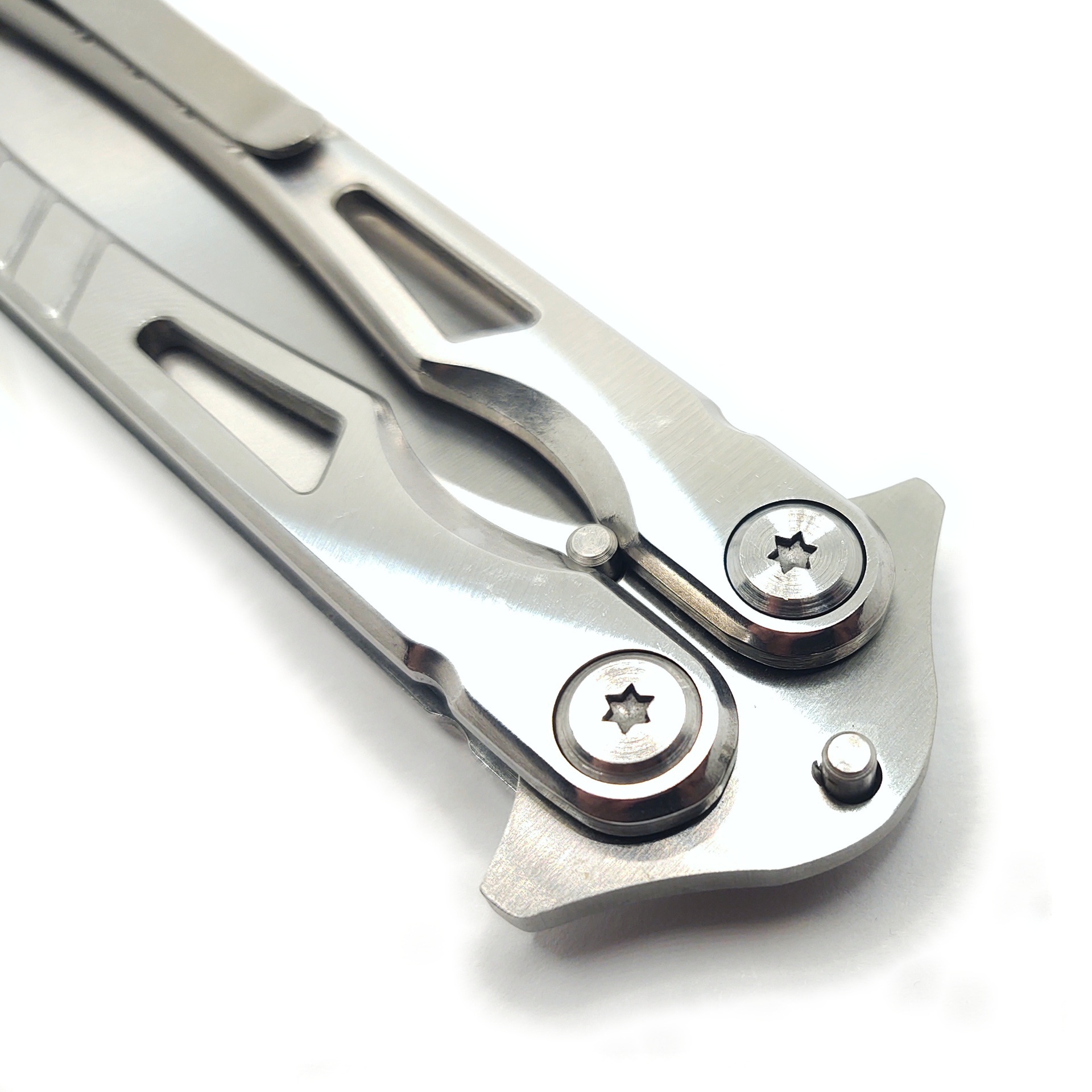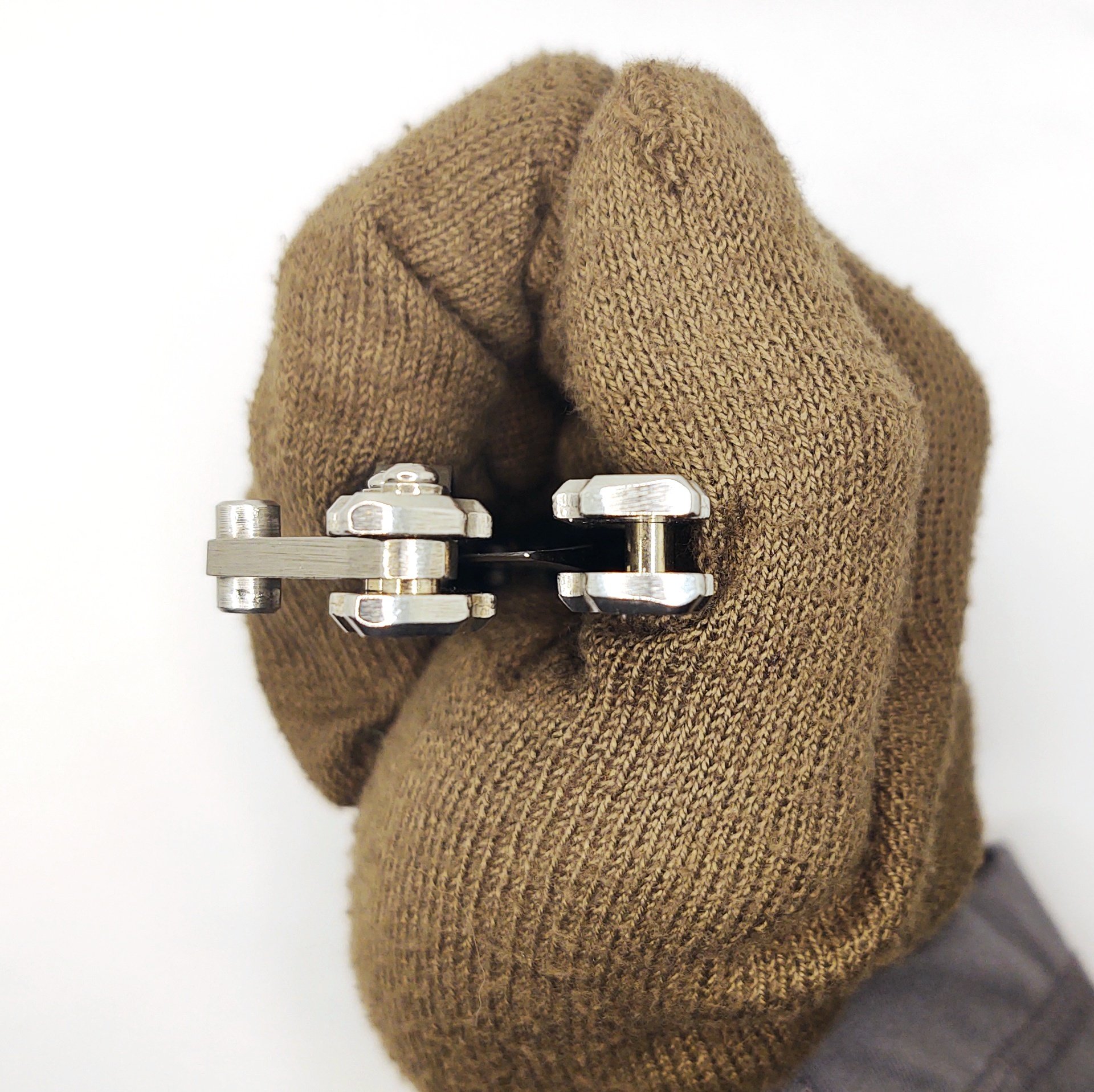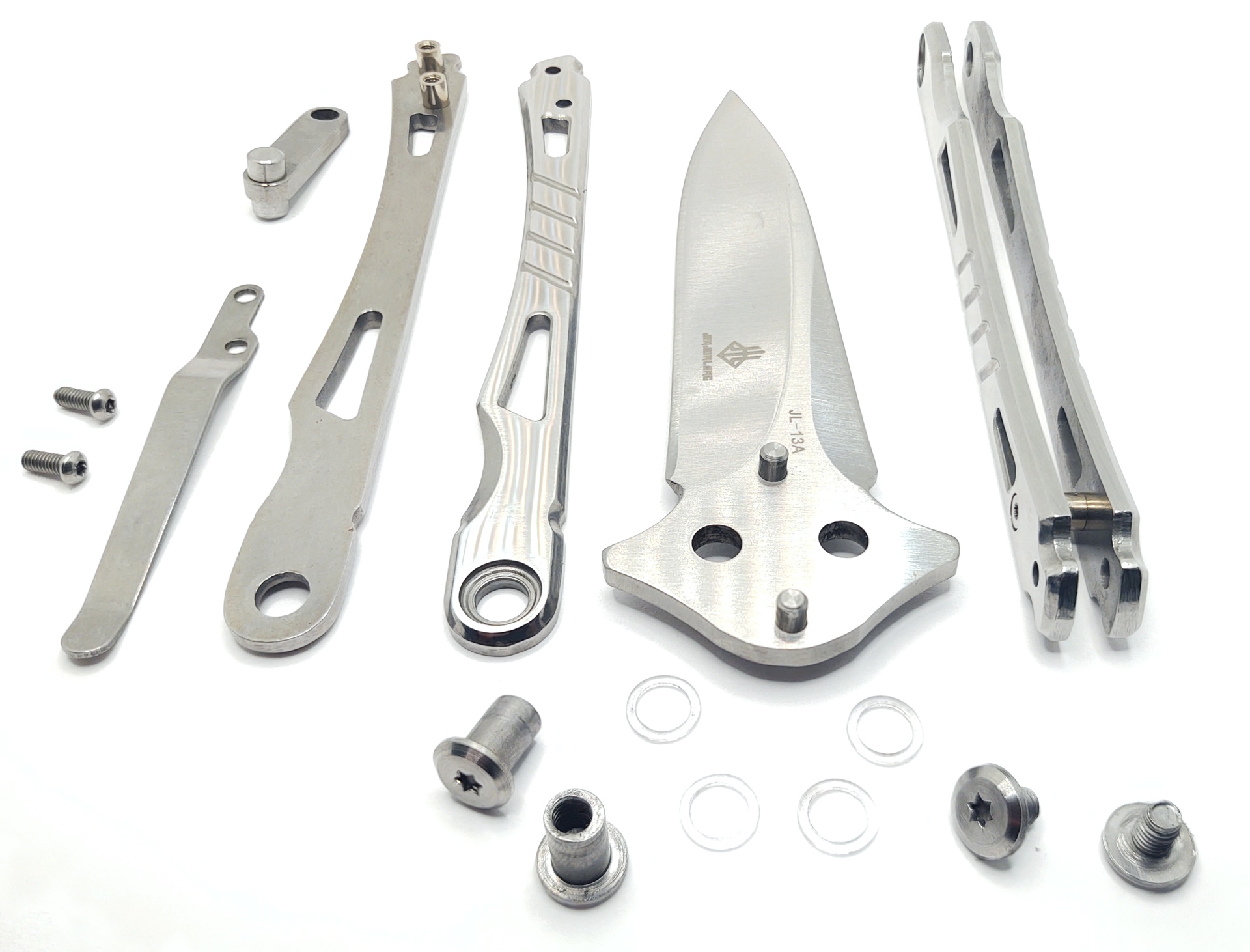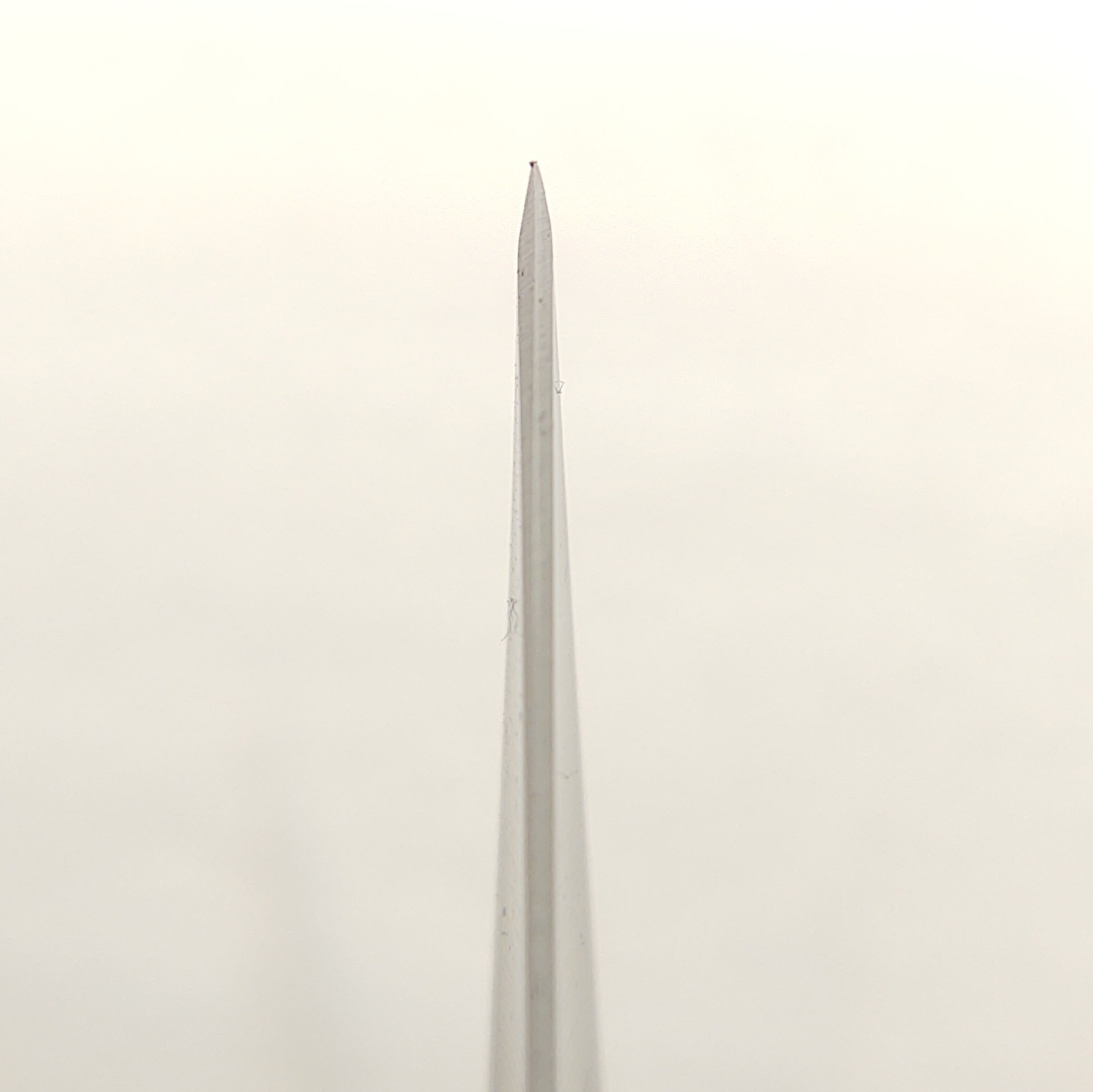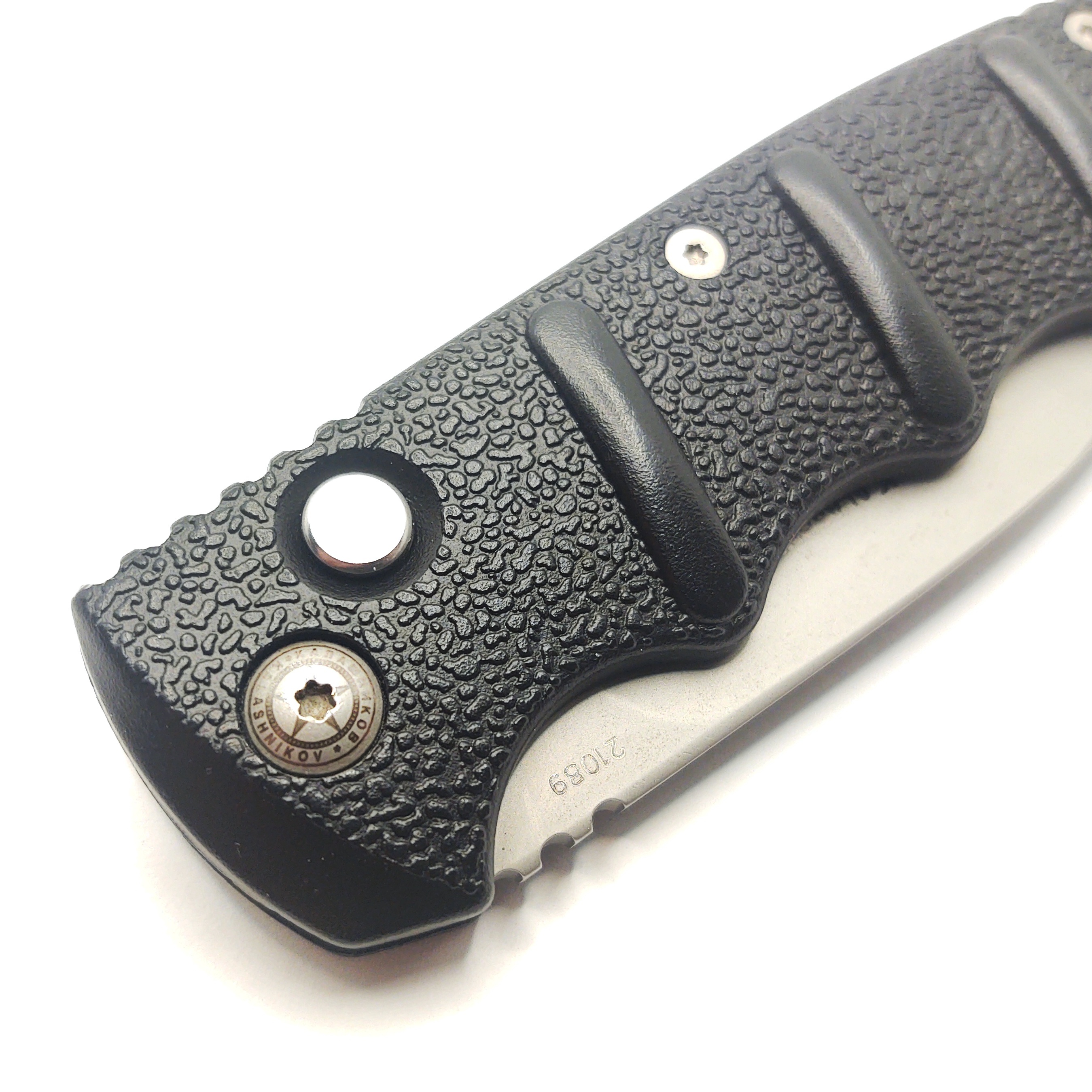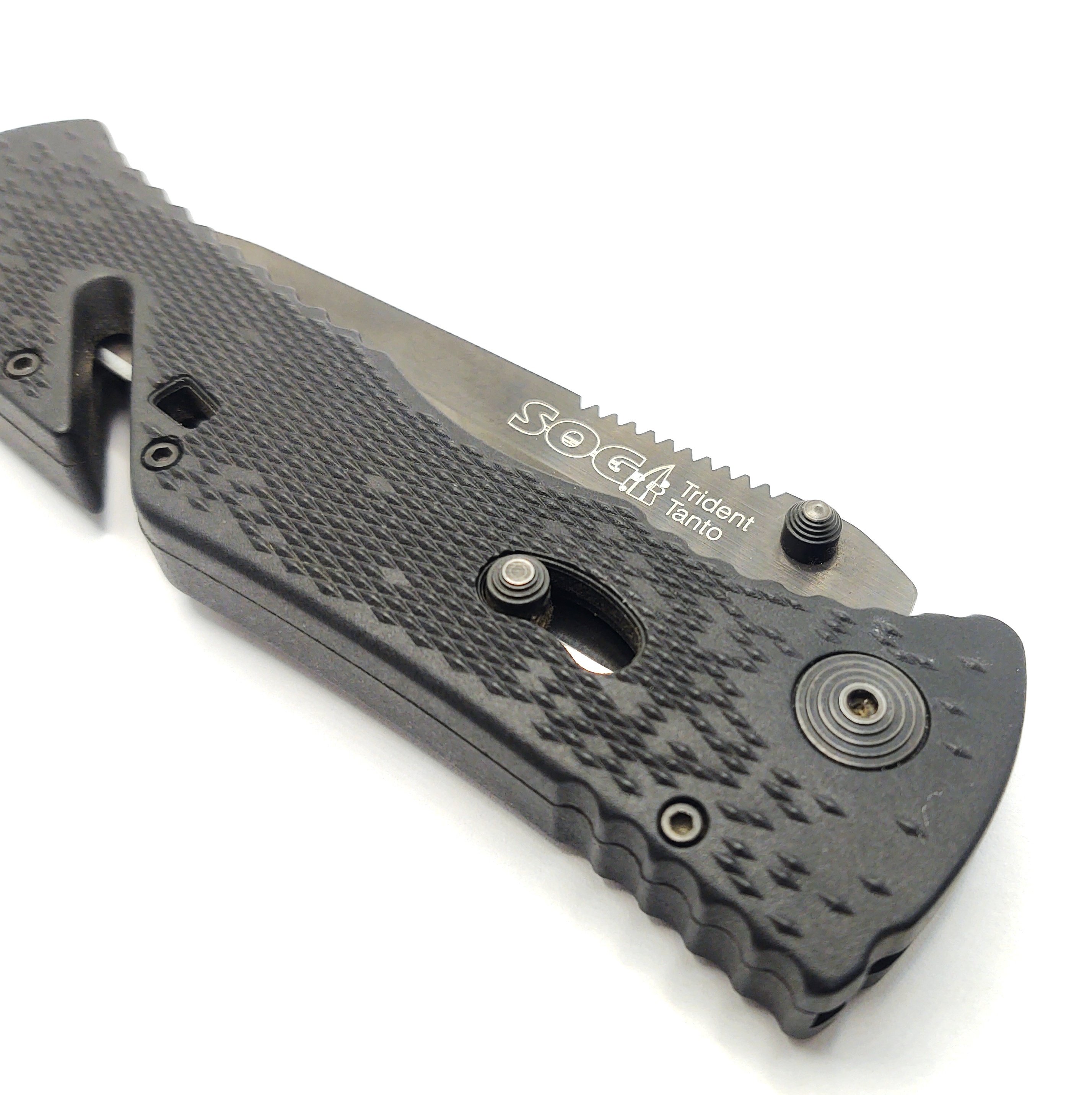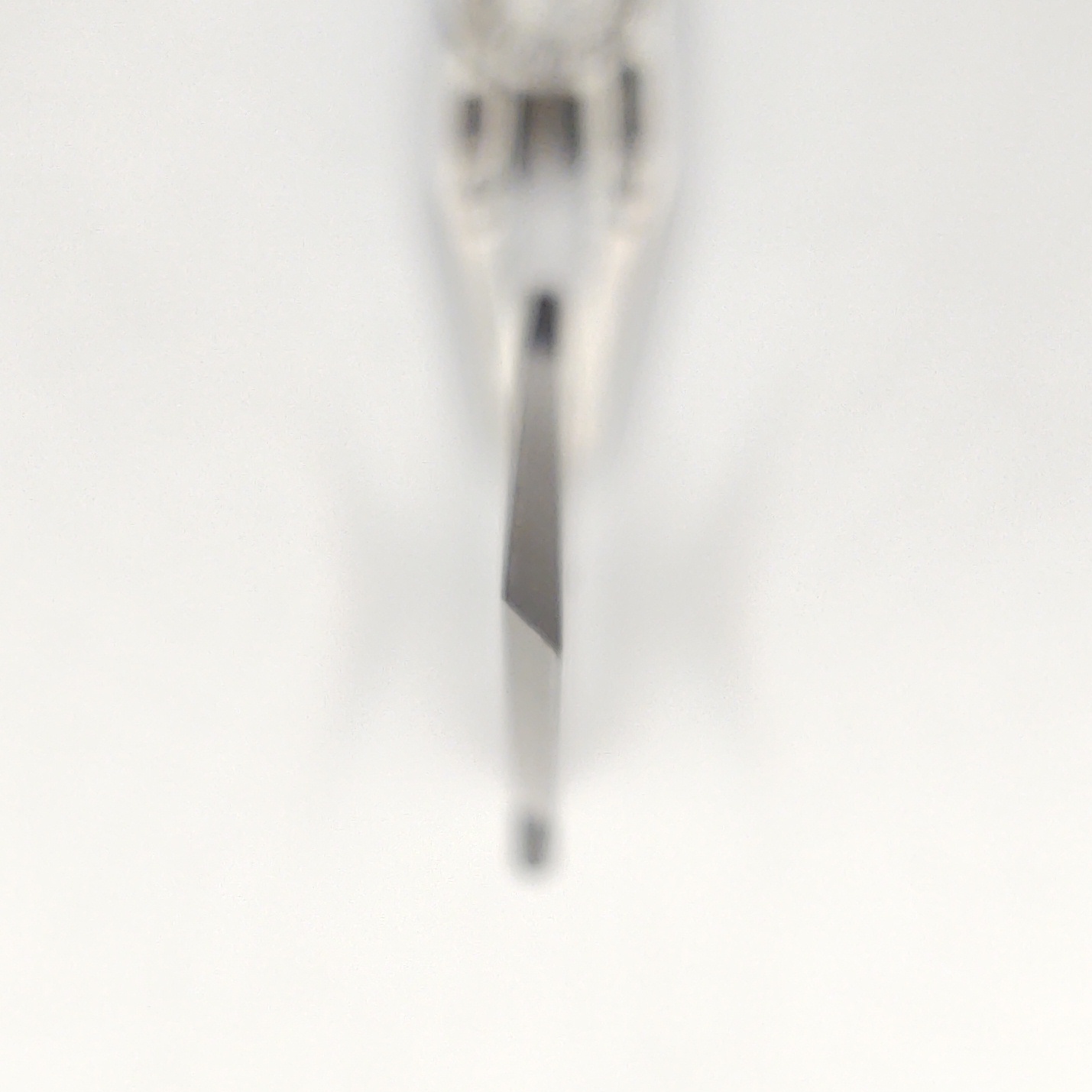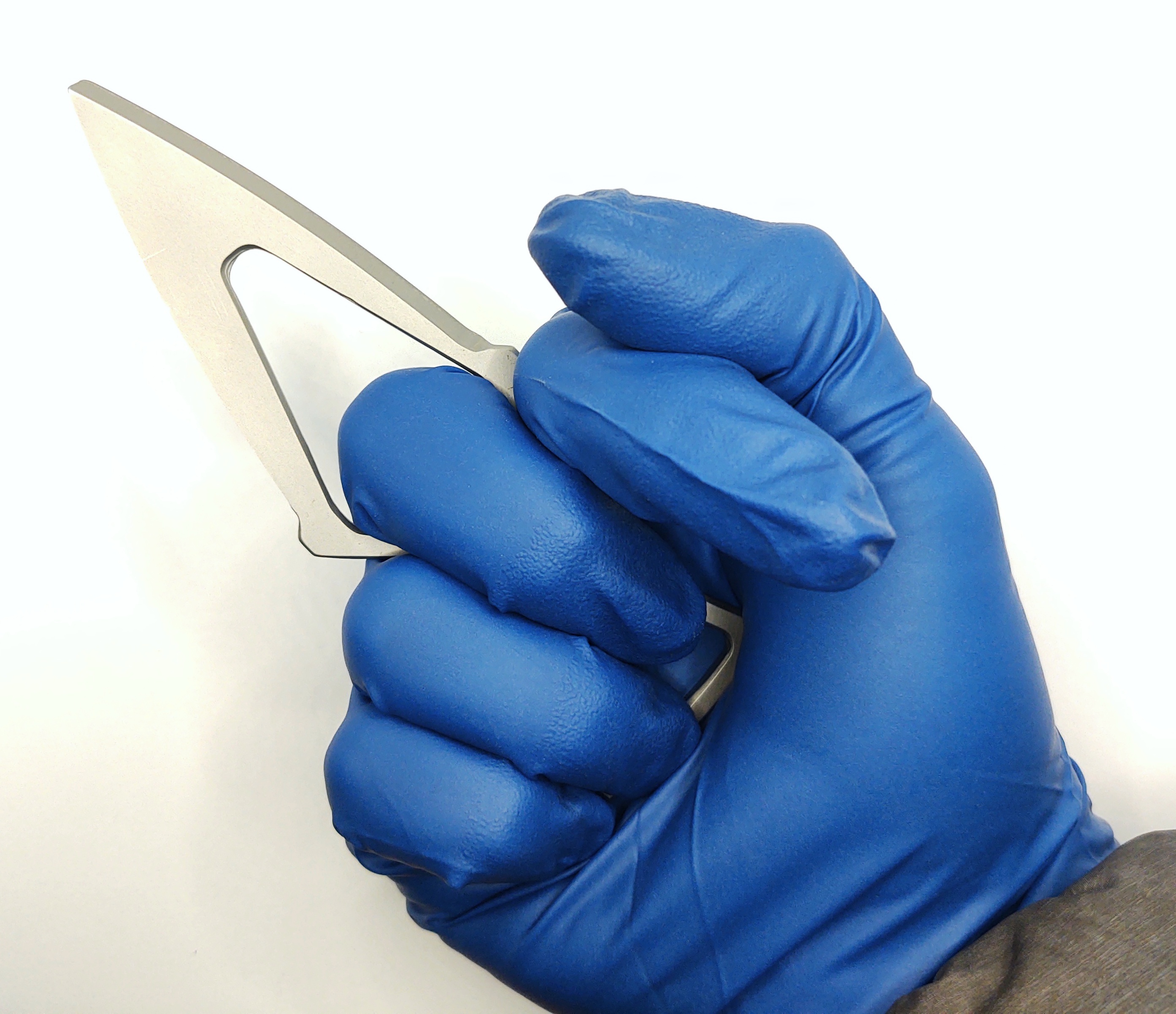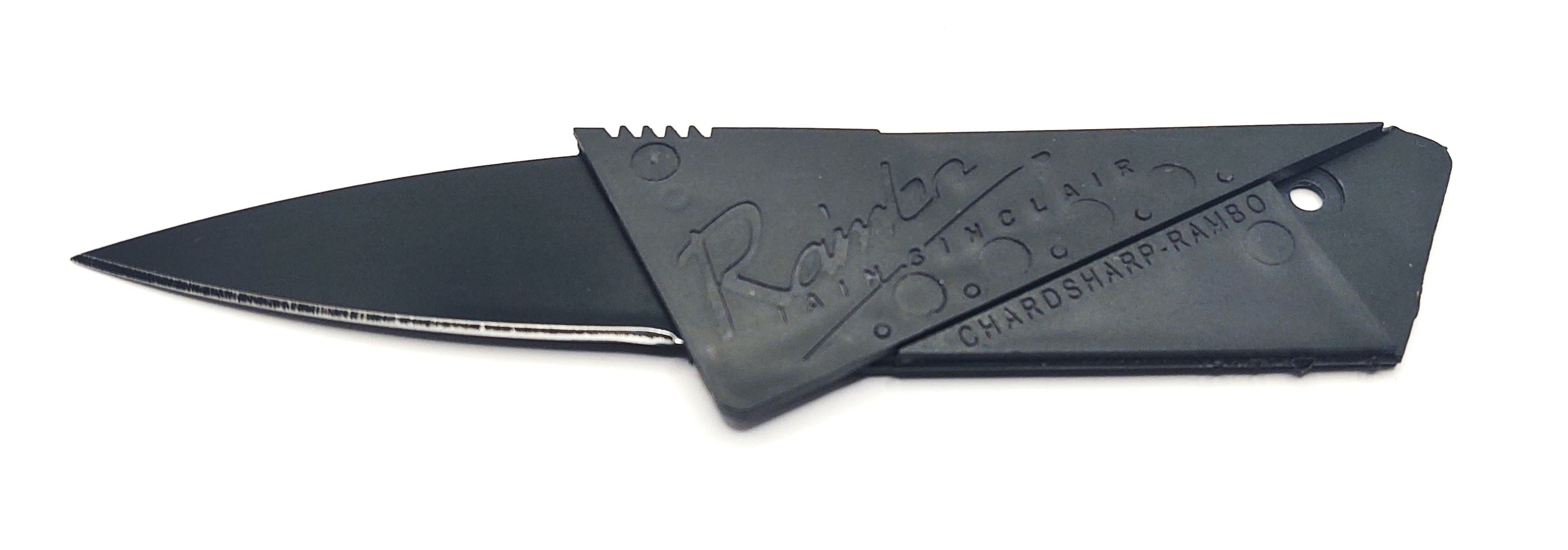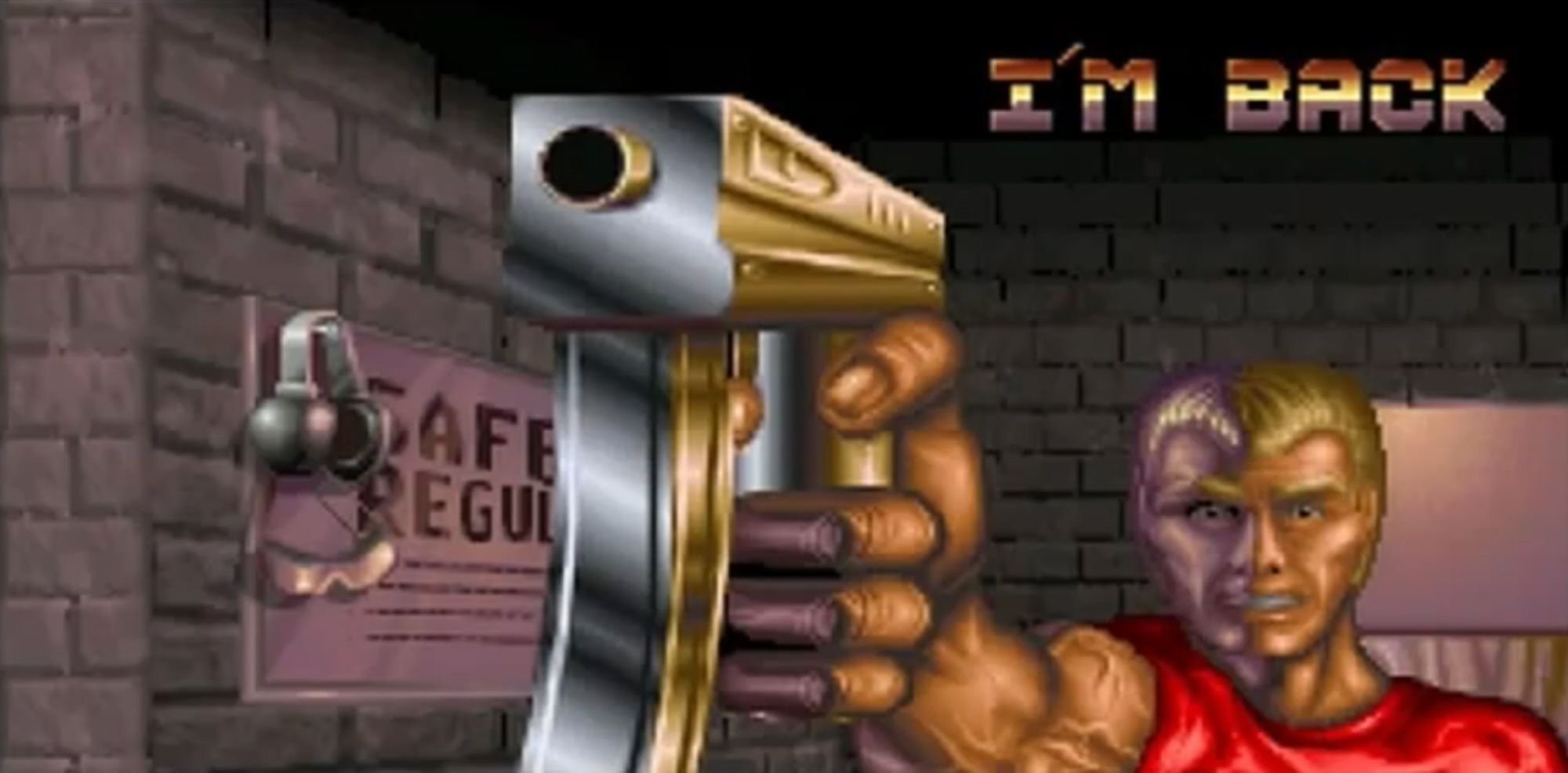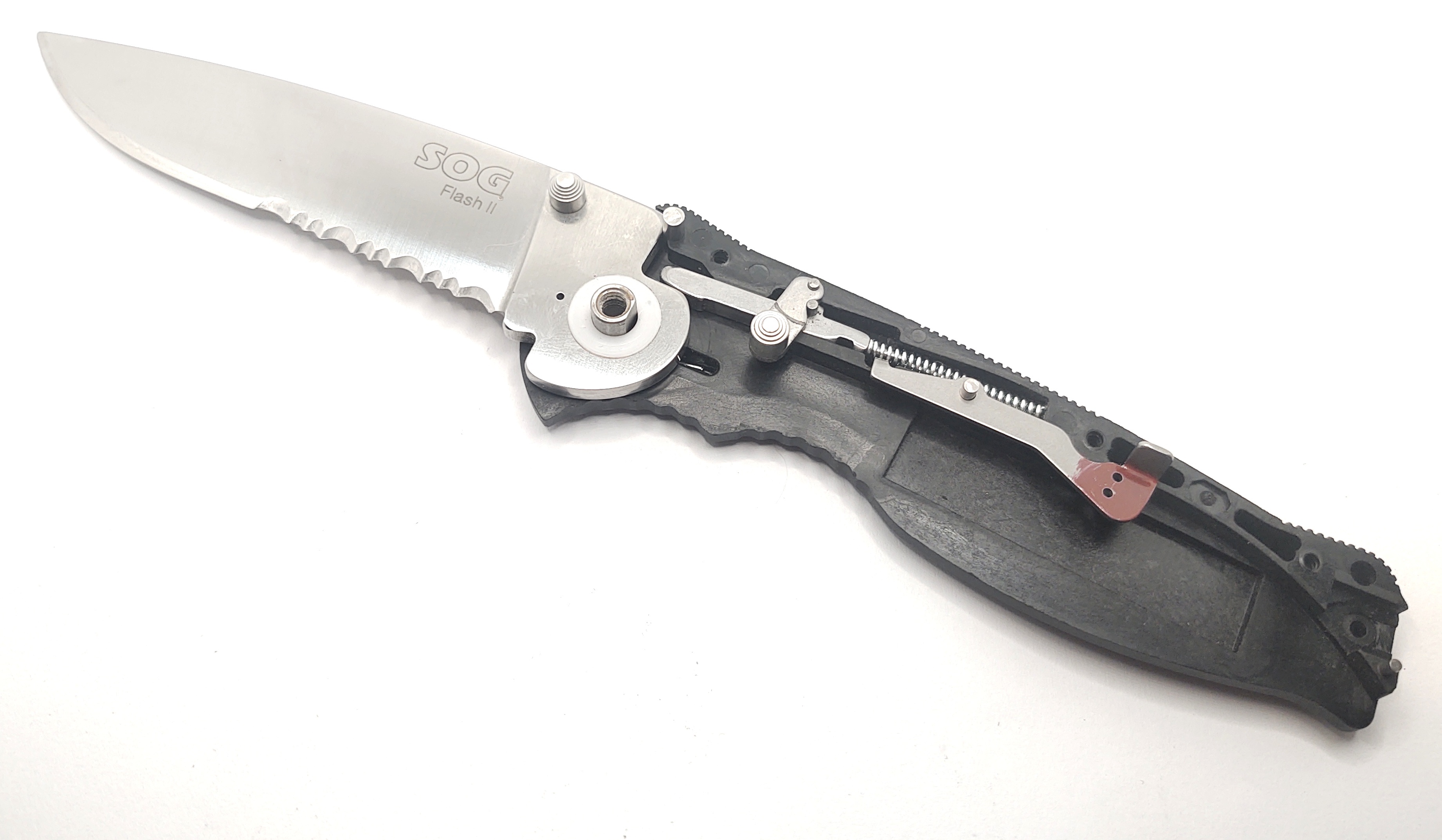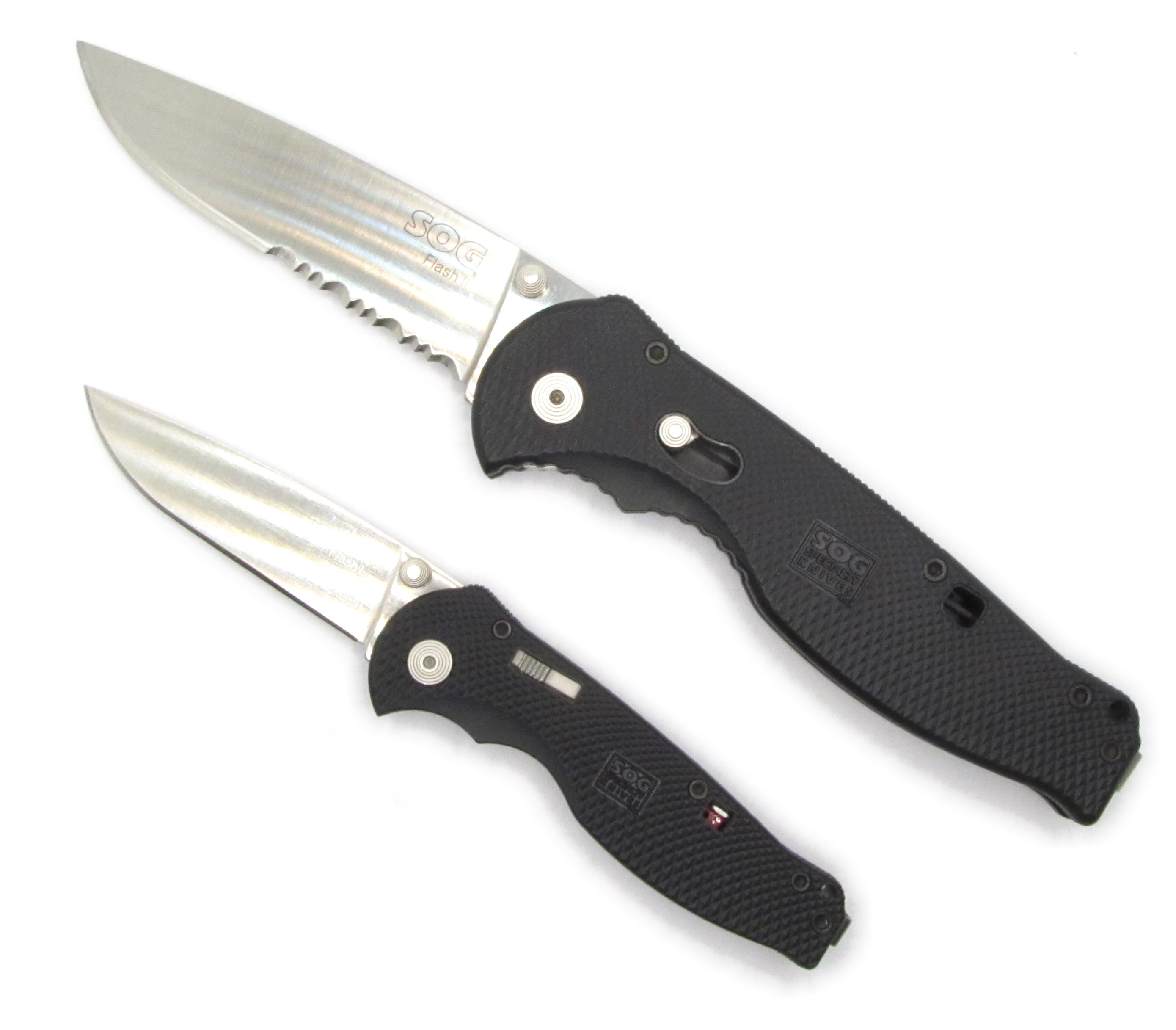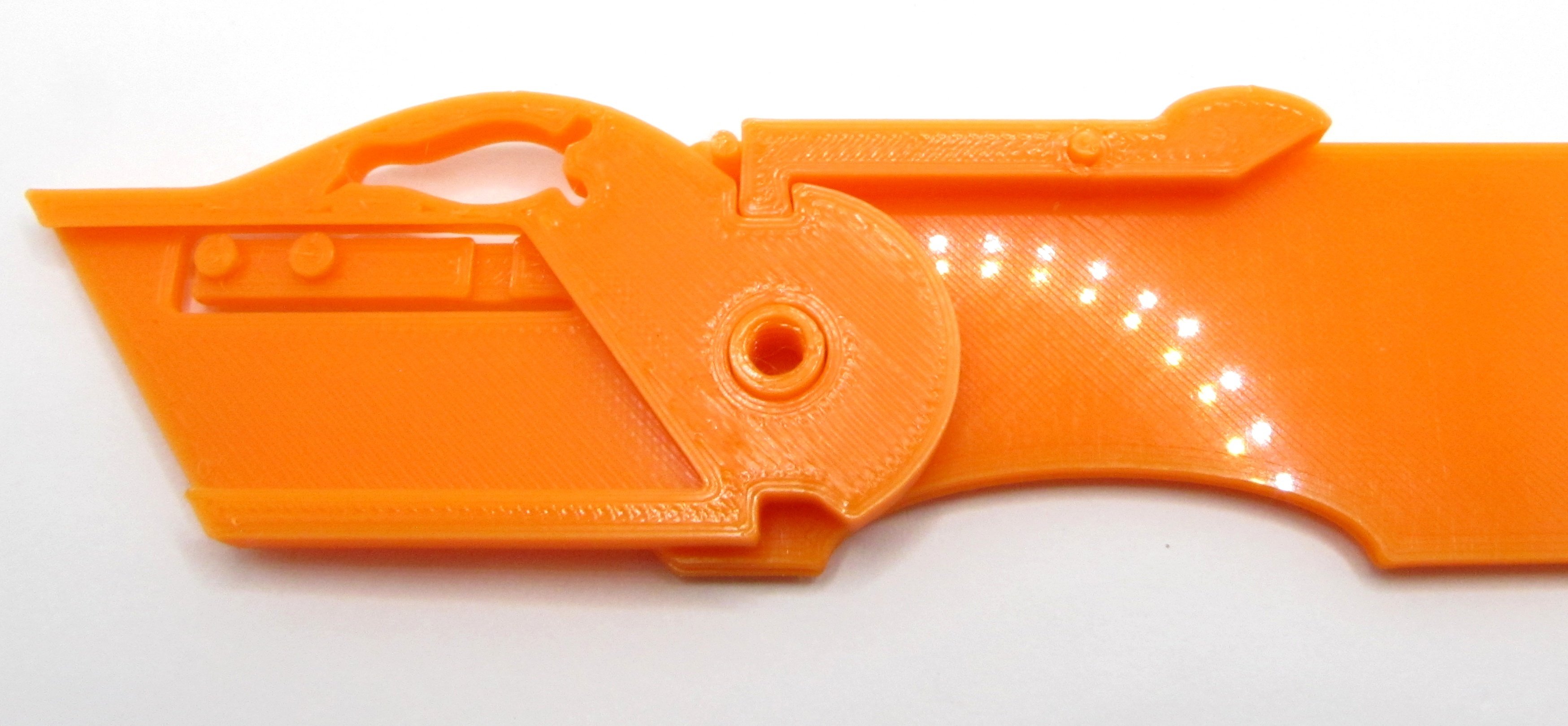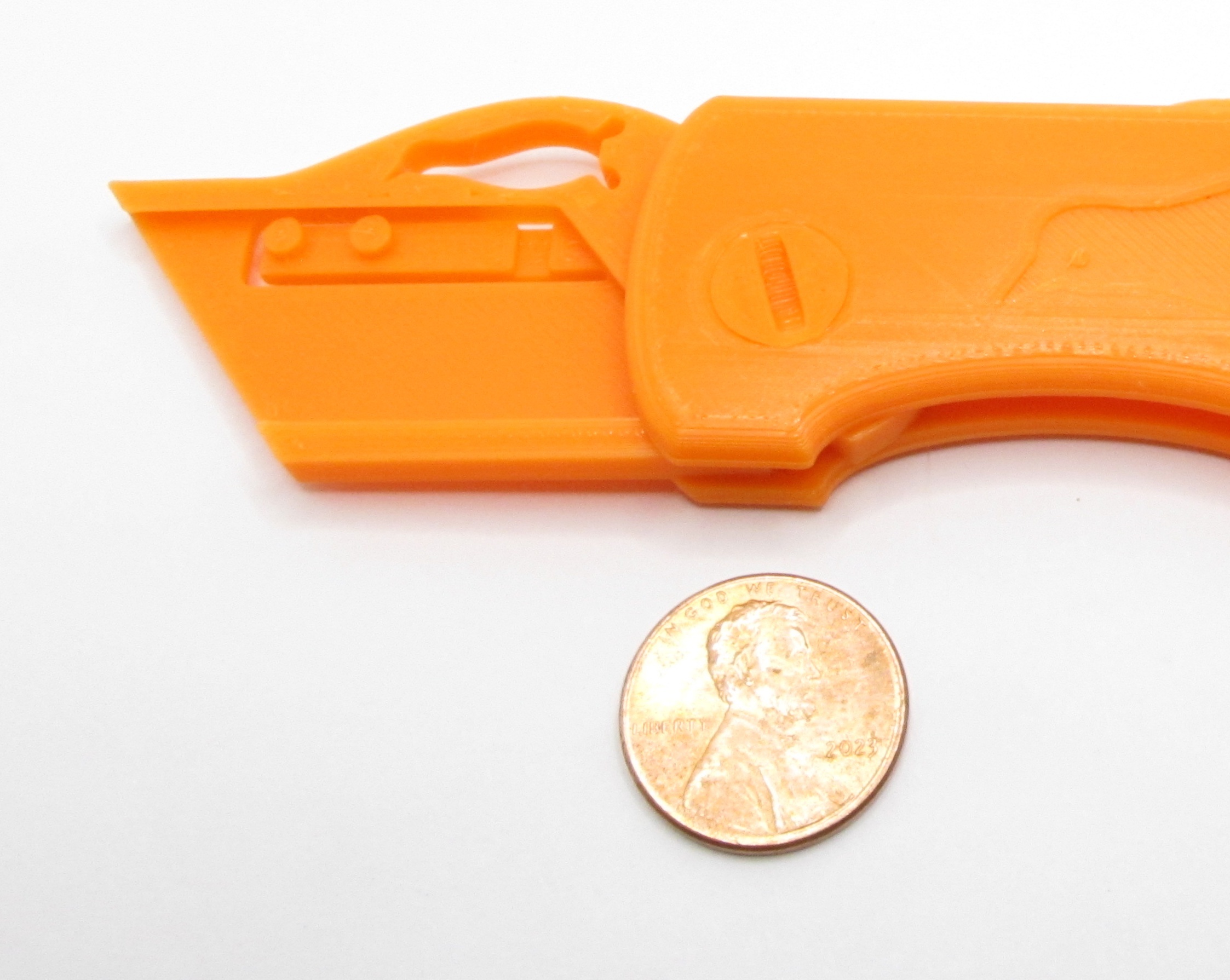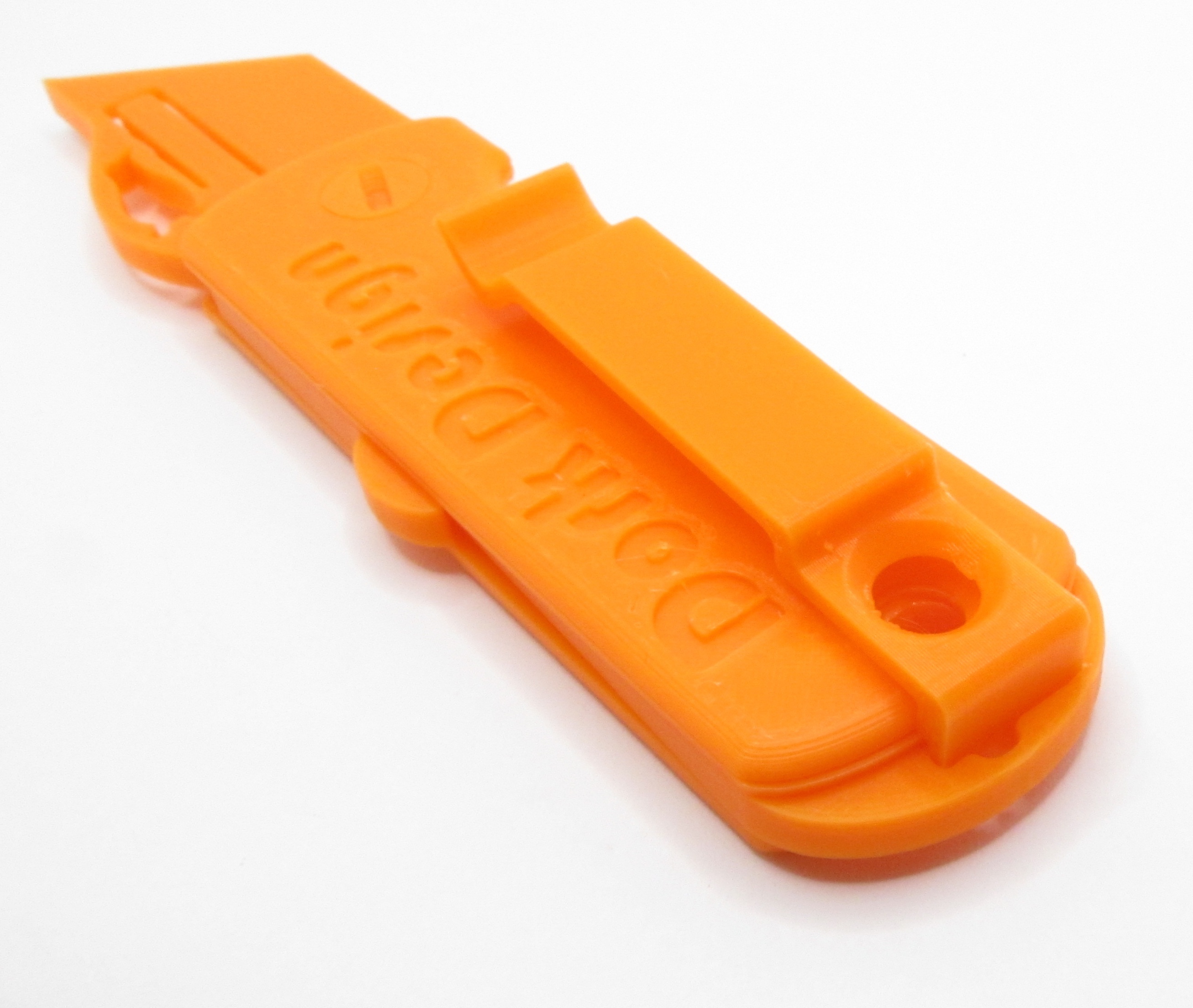Two things drew me to this nondescript, brandless knife. The first thing is that it came in the absolute fakest Benchmade box...
(Dramatic pause.)

And here's the reverse, for good measure.

In case the sticker on it didn't tip you off, this absolutely is not any kind of Benchmade. Let's just say, somehow I highly doubt the validity of that Lifesharp promise on the back of the box in this particular case. Another clue to an astute observer might be that this doesn't resemble any particular model of knife they've ever made.

Except, it must be said, for one other detail. Which is in fact the second thing that drew me to this knife.
It has a Benchmade Model 42/62/63/etc. style extension spring latch. Boing!
Those of you who are regular readers know this is exactly the kind of thing that gets my motor going. And it's not something you find very often coming in at $14 from Dongguan, China. Alas, the only designation I can find for this is its product description, which melodiously states: "Benchmade Guro EDC Balisong Knives Tactical Butterfly Knives Trainer Flipping Practice Folding Knife Combat Multifunction Tool Gift."

The "Guro" is a full 5-3/4" long closed, and an absolutely massive 10" long when latched open. Because Long Knife Is Long, the blade is 4-1/2" with a drop point and a depression in it that I am not in this context going to call a "blood groove," because that's silly. There is a large choil at the base, but only on one side because this is a traditional dual kicker pin design. No Zen pins here. The blade's alloy is of course unspecified, but don't expect miracles and you won't be disappointed. It is 0.110" thick and is very shiny, to the point I think it might actually be chrome plated.
Actually, the entire thing is hella shiny thanks to the deep metallic blue finish on the handles which upon close inspection is somewhat iridescent and is sprayed on over the outside of the handles. A bit like anodized titanium or the scales on a butterfly's wing, its color seems to come from refraction rather than any type of pigment because the hue shifts where the knife is smudged, and comes back when it's cleaned. In the areas where it's sprayed on more thinly, or in the corners and groves, it takes on magenta and then gold tones instead. It's not sprayed on very evenly and doesn't appear to be terribly durable, either, since my knife arrived with several bits of the finish already rubbed off on the edges and sports a few thin spots and holidays even from factory fresh. The thing also fingerprints like crazy.
The Guro rings in at an absolutely ridiculous 170.2 grams (6 ounces) thanks to its all metal construction which gives it a mix of both old and traditional cheap Chinese balisong construction along with some new. It's an odd combination.

The handles are for instance single piece solid castings, like we're used to on the cheap potmetal flea market butterflies from the bad old days. Within you can see that the glossy blue finish is indeed sprayed on, because it's not sprayed on the insides where you can see it peters out. The handle material appears to be brass.
But, inexplicably, it has that spring latch.

The blade also rides on a quartet of nice brass washers, which is certainly unexpected. That means the action on this knife is better than it has any right to be -- on both ends. Thanks to these plus the long heavy handles, the flipping feel is quite free albeit rather slippery with the gloss finish.

The results of the wiggle test put us back on track for Chinese cheapness. The pivot holes in the blade aren't very precise, so a lot of slop and play is left in the blade.
And it wouldn't be a Chinese knife at all if it didn't have some aspect that wasn't completely inexplicable, and in our case it's this:

The latch shank is threaded, and the head is a knurled nut that can be screwed up and down it.

This includes being able to screw the latch head up the shank so far the knife can't be latched. Or, if it's already closed, such that you can't unlatch it. Theoretically this is "tunable" although why you would ever want to do so is beyond me. Once you have it where you like it, which is probably at its maximum anyway, a drop of threadlocker on there would probably be a good idea.
On the bright side, the extension spring ensures that the latch stands to attention well away from the handles and blade at all times when it's out, so it can't strike either one and blemish your, er, collector's value.
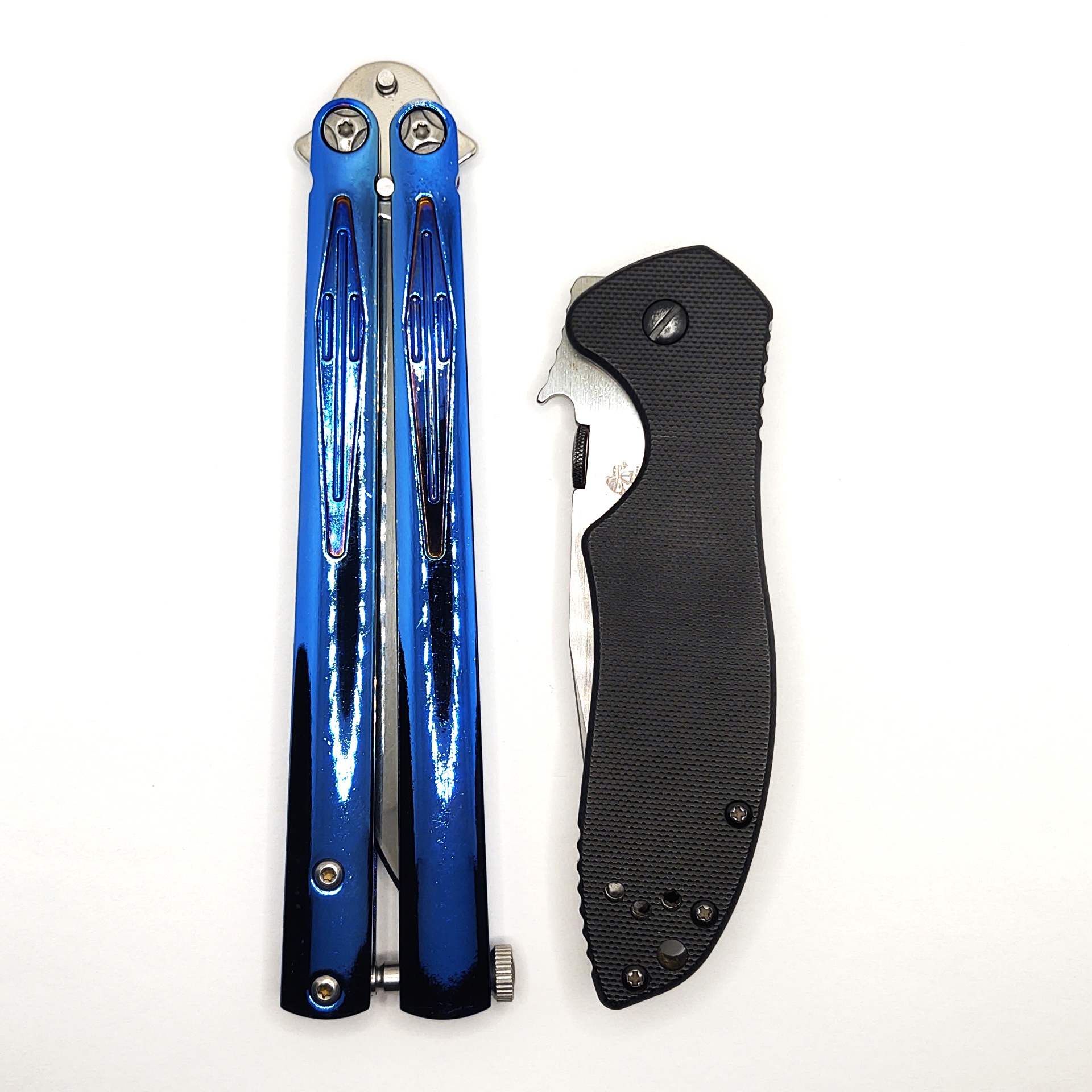
This thing is bigly yuge. Really. There is no clip provided, but it's probably too long for pocket carry anyway. It did come with a very cheap and nasty nylon belt pouch with a Velcro closure that's so boring I didn't even bother to photograph it.

And now, what I just know you've all been waiting for.
The Guro is not too tough to take apart, surprisingly. The pivot screws are T9 Torx heads with some decorative carvings in them, and they are completely round Chicago screws with no clever tricks or design aspects to them. You can undo them easily enough by undoing the male sides with the knife latched, or just grabbing either side one each with a pair of screwdrivers.
Inside are our four brass washers, completely unlubricated from the factory in my example (which I rectified before putting it back together), the latch spring, and nothing else.

The latch itself is easily the most nicely manufactured part in the entire ensemble.

Call me old and out of date if you like, but I do remember those dark days when the grind on every cheap knife -- even low end brand name ones -- was crap. Therefore I am continually surprised when I receive garbage knives like these that still manage to show up with a competent edge on them. The Guro has an unexpectedly even edge on it that is quite sharp enough to do yourself a mischief with it if you handle it incautiously.

It is also actually within true. I'm absolutely astounded.
The Inevitable Conclusion
I can't fathom why whoever is selling these decided to try to brand them as "Benchmades." I have to wonder who they think they're actually going to fool. This would be a perfectly fine cheap bali ready to stand by its brethren on the dusty card table at your local flea market without the baffling branding decision, anyway.
Make no mistake about it, some aspects of this knife are definitely crude and still of the old school. But what we're getting out of the PRC for what you pay these days is continuing to amaze me. Admittedly, so far we've only had a sample size of two. And I've deliberately picked the ones that give me the impression that they might have something to offer. But on the whole I've definitely seen worse, and sometimes that's the finest praise you can give a thing.










